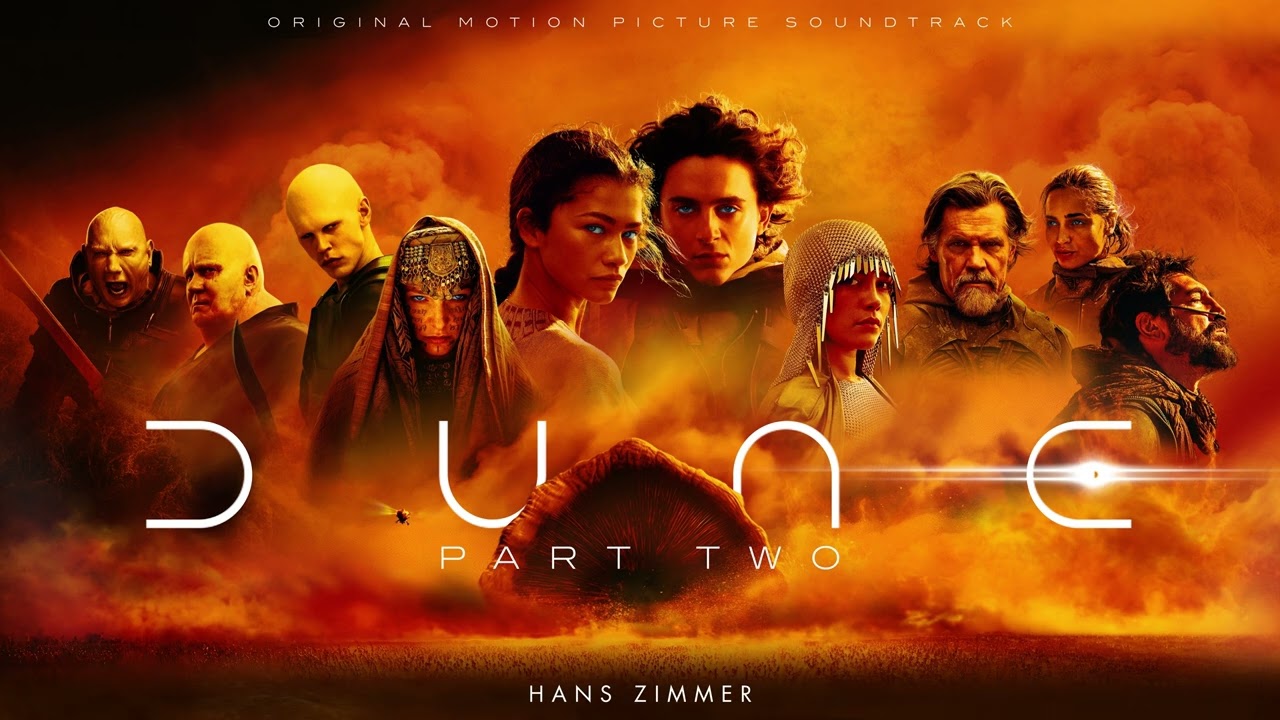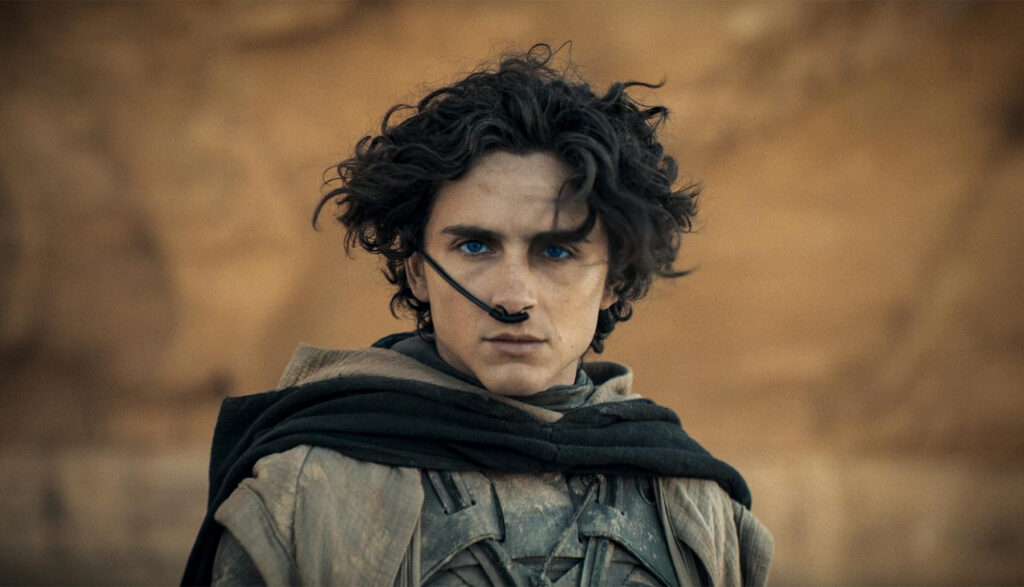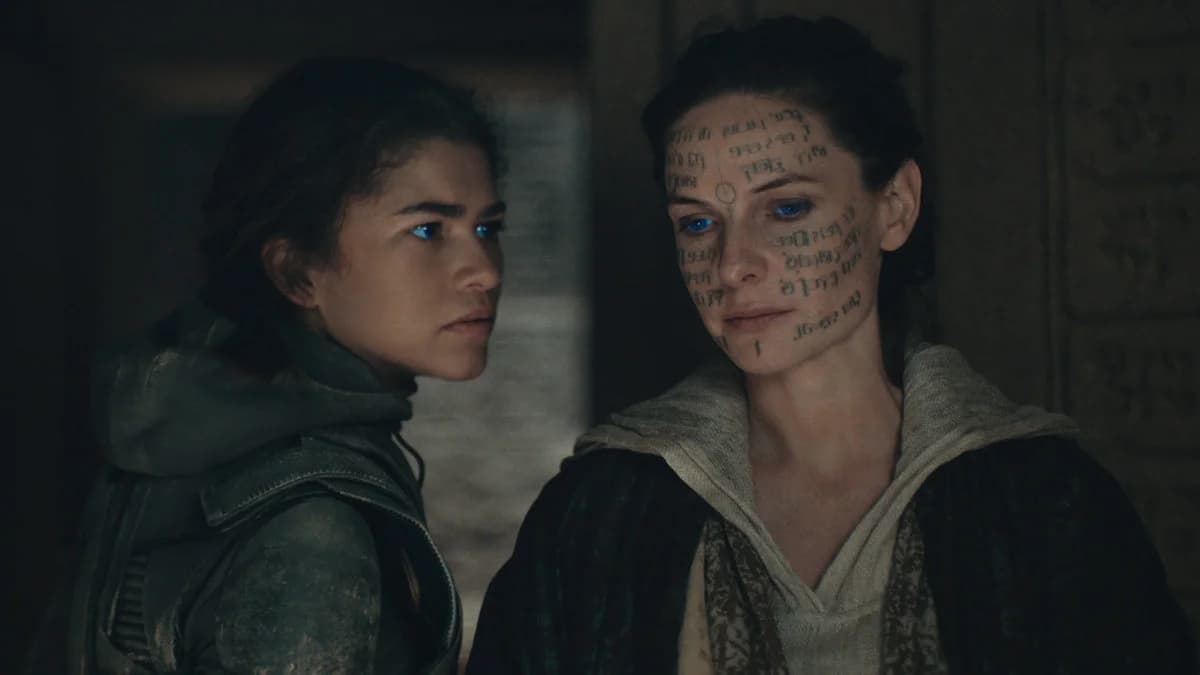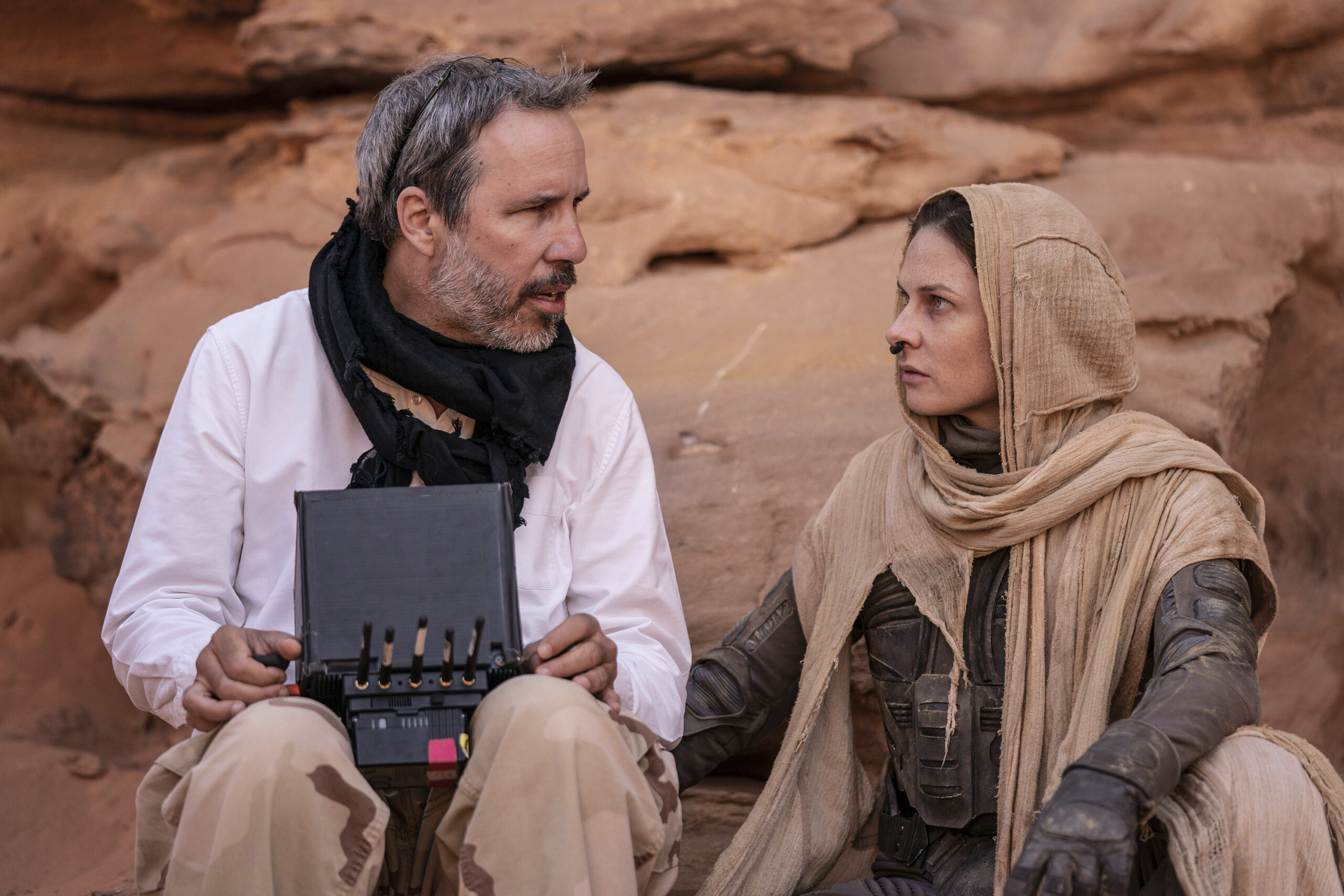How Director Denis Villeneuve Conquered Dune and Dune: Part Two

The novel Dune has sold almost 20 million copies worldwide and has been translated into more than 20 languages. It’s safe to say expectations were high for the movie adaptations directed by Canadian-born director Denis Villeneuve. I believe those expectations were met as Dune rated an 83% on Rotten Tomatoes’ Tomatometer, and its sequel, 93%.
93% is Villeneuve’s highest score to date on the site. A third Dune has been announced—Dune: Messiah, although likely it will be four or five years before it makes its way to the big screen, as Villeneuve is committed to a couple of other projects first.
One of those projects is another film adaptation, this time of Arthur C. Clarke’s Rendezvous with Rama. When I read that announcement, I was ecstatic. Published in 1973, I felt it was easily Clarke’s best work. It takes place over a century from now and tells the story of crew members aboard the spaceship Endeavour, sent on a dangerous mission to study a mysterious alien starship of unbelievable size that has entered the Earth’s solar system. The film’s production, spearheaded by Morgan Freeman, had been in development hell for decades. But now it’s back on, and in the hands of Denis Villeneuve no less. This thrilled me even more, and I will tell you why in this article.
A slow, deliberate pacing permeates Villeneuve’s movies, which are very character driven. Each character has their own motives (that are sometimes unclear even to themselves), but in time we learn about them all. Take Emily Blunt’s FBI character, Kate Macer, in the Villeneuve-directed Sicario. Macer is so conflicted by the actions of the CIA task force she’s on temporary assignment with that she doesn’t know whether to arrest them all for their clearly illegal actions or keep her mouth shut because they’re getting results.
Actor Benicio Del Toro is also in Sicaro, playing a mysterious figure known only as “Alejandro”. Alejandro also works with the group in an unclear role but watching him one is reminded of a pit bull waiting to be unleashed. When his real motivation is revealed in one of the movie’s final scenes (which I won’t share here), his resulting actions shocked me to my core. I was still thinking about Alejandro and his motivations days later, and what I would do in his shoes.
Which brings us to Villeneuve’s latest films, Dune and Dune: Part Two. Here there’s a lot more characters to deal with, but over time we get to know what drives them all. Because of Villeneuve’s focus on character development, we really start to get a feel for these characters; sometimes we like them, and sometimes we don’t. And sometimes a few of the characters are not who they appear to be.
The plot may be described as a fight for control of the planet Arrakis (nicknamed ‘Dune’), where the most valuable commodity in the galaxy is harvested—spice. The movies revolve around Paul Atreides (played by Timothée Chalamet), a young royal destined to rule but caught up in a conspiracy intended to wipe his people out. As Paul searches for his true purpose and becomes a man, he will be faced with uncertainty, love, revenge, sacrifice, and more.

Here’s the thing about the Dune movies. Ask yourself: how many times have you gone to a movie and said to your friends after, “Well the effects were great, but the story was weak” or something similar? Not here: the story, cinematography, acting, sets, visual effects, wardrobe, props, editing, and music (well, the score was composed by Hans Zimmer—does anything more need to be said?) are all top drawer.
What could be argued, as previously alluded to, is that the pacing is slow—that Villeneuve’s movies take too long to get to the climax (each Dune movie is over two and a half hours in length). But for me, that’s what makes Villeneuve as a director stand out; he’s not going to sacrifice the story for the sake of a two-hour run time. So, when you consider that, you must prepare yourself to watch a Villeneuve movie.
If you’ve had a long day and are looking to turn your brain off for a few hours, then you will leave the theatre disappointed. But if you pay attention, and take in all the details, get to know the characters and all the wonders of the worlds Villeneuve has created here, then you will find the payoff is worth the wait. Which is interesting, because it could be argued that in the case of Dune, the sequel is the payoff, as it’s in Dune: Part Two where all the big reveals happen, and everything comes together.
So acclaimed are Villeneuve’s films (his resume includes directing Incendies, Prisoners, Enemy, Arrival, Blade Runner 2049 and more) that Villeneuve seems to have his choice of film stars, big ones, and lots of them. In addition to Chalamet, we have Zendaya, Jason Momoa, Javier Bardem, Rebecca Ferguson, Oscar Isaac, Josh Brolin, Stellan Skarsgård, Dave Bautista, Charlotte Rampling, Austin Butler, Florence Pugh, Christopher Walken and Léa Seydoux. Does anything strike you as unusual in this list? The thing is, a lot of these actors can command top billing and more screen time on other films.
Take Austin Butler, who plays the evil Feyd-Rautha Harkonnen, a sociopath gunning for the emperor’s job. Butler is unrecognizable in the role; it’s been reported he had to gain 25 pounds of muscle and undergo voice training for the part, and yet he doesn’t show up until 70 minutes into Dune: Part Two. Think about that for a moment. Butler was reportedly paid $700,000 for Elvis, and based on its success one would think he’d immediately be into headlining another big film. What exactly is he doing here almost halfway through a sequel? To be fair, in every scene he’s in, Butler steals the show. But did he sign on board like the others did because this is a Villeneuve movie and they wanted to be a part of something epic, even in some small way? I think so. I know I would.
You may have noticed that the Dune movies feature a compelling cast of female characters with important roles to play. Their contributions go beyond simply needing to be saved or window dressing, they influence the narrative in meaningful ways. This may not be earth-shattering news, but It’s worth noting that the movies are based on a novel published by Frank Herbert in 1965. Herbert’s inclusion of such strong female characters at that time would have been viewed as quite progressive.
According to the film’s electronic press kit, Villeneuve tells us, “Everything around Paul, his future, has been constructed by women. I wanted the movie to have that feminine power present.” And it does. His mother, Lady Jessica Atreides, played by Rebecca Ferguson (of Mission: Impossible fame) is a member of the Bene Gesserit—a sisterhood with magical-like powers that stay in the shadows, quietly influencing others to obtain the group’s goals. Florence Pugh (who was in Oppenheimer—read our review here) is Princess Irulan, the Emperor’s daughter, also a member of the Bene Gesserit. Surprisingly, Irulan is a little more thoughtful about what their actions will ultimately mean to history.

Zendaya plays the most important woman in Paul’s life, Chani, who becomes his love interest, but there’s some conflict there as she is also a warrior. In fact, there are many female warriors in the movie and no one, at any time, questions whether their sex makes them right for the job because in this world they know no other way.
Of course, more does need to be said about the music. Hans Zimmer, the legendary composer who has crafted scores for so many memorable movies (from The Lion King to Gladiator to Interstellar), has delivered a soundtrack here that would be best described as haunting. Zimmer started work on the score while the film was in production (he visited the sets and watched some of the shooting), rather than later receiving a completed cut of the film to work with. This immersive technique is another way in which Villeneuve works, and it is no surprise Zimmer took home the Oscar for “Best Original Score” for Dune.
The Dune movies are really meant for the big screen. With the advent of OLED TV screens and Dolby Atmos home theatre systems, I don’t say that lightly. The settings here are astonishing. Rather than heading out to Arizona or Nevada, Villeneuve shot the Arrakis desert scenes in Wadi Rum, Jordan and Abu Dhabi, United Arab Emirates. It was worth the trip; how the light plays on the shifting sands, and the great care the characters take in transversing them so as to not awaken the dangerous sand worms below, reminds me of a small ship in the ocean surrounded by sharks.
The sets feel real, partly because a lot of them were built on a large scale, instead of relying solely on green screens to convey size. Villeneuve says he does this so that his actors have something to work with, something that will influence their performance (and Villeneuve says, his directing too). The interiors of the royal family’s home are designed like giant bunkers, able to withstand the blazing heat and horrific sandstorms that rock the planet. They look like they can. The fighter ships (called “ornithopters” or “thopters” for short) are unusual, they move fast and look like a cross between some sort of mini-submarine and a dragonfly, but to their credit they are unlike anything in the history of cinema. Again, no surprise, Dune also won Academy Awards for best visual effects and for production design.
What’s worth noting is that although the warring factions are light years ahead of Earth in technology, the choice of weapons for hand-to-hand combat are swords. This is because a gun’s bullet cannot effectively penetrate the personal force fields that the warriors wear. This is a benefit for us moviegoers, as the resulting use of swords makes for some incredibly choreographed fight scenes. In fact, the climatic fight scene in Dune: Part Two is off the charts in terms of suspense—I found myself leaning forward in my chair, mesmerized as to how it would play out.
How it played out I will not tell you here. But Villeneuve has crafted an ending that leaves one both satisfied and wanting more.

Villeneuve was born in Gentilly, Quebec and it was his 2010 film Incendies that put him on Hollywood’s radar with a nomination for an Academy Award for Best Foreign Language Film. Today, he is arguably Canada’s most successful film director. Recently, The Hollywood Reporter has announced that Villeneuve will receive the Academy Icon Award at the upcoming Canadian Screen Awards. According to the Academy of Canadian Cinema and Television, the award is “presented to a Canadian individual or institution for their exceptional, ongoing contribution to the media industry at home or abroad.”
Villeneuve certainly meets these criteria, and it brings us full circle as to why he will be the ideal director of Rendezvous with Rama. Like the Dune novels, Rama’s story takes time to unfold, with plenty of characters to meet along the way and breathtaking vistas and details to take in before the real action begins. But I know in Villeneuve’s hands the journey will be a fascinating one and the payoff will be well worth the wait.



